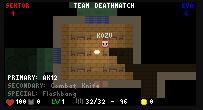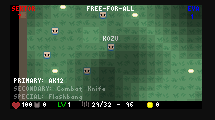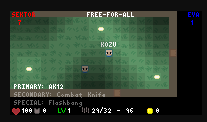..()
var obj/Lighting/Light_Source/L
var obj/Lighting/Darkness/D
var list/LS
. = view(7,src)
for(D in .)
LS = view(7,D)
var A = 210
for(L in LS)
A -= get_dist(D,L) * 30
D.alpha = 210 - A
Problem description:
The lighting system doesn't seem to be acting right and I have no clue why, was hoping to get some insight.
The above code is ran upon each light baked onto the map and finds all the darkness tiles within view and searchs their view for lights to allow lighting to overlap smoothly but this seems to be the results as it's the only light on and notice to the right how it's dark.



